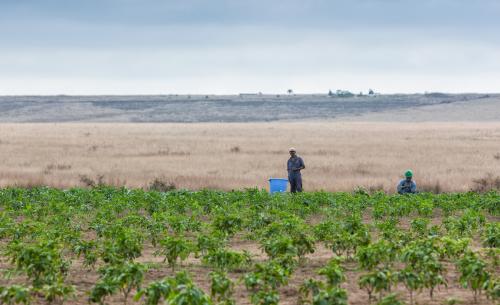In just a few days, I will be turning 50. This is a significant milestone for me: looking backward half a century and taking my first steps into the “silver economy” (according to an extended definition). The good news is older people are no longer at the periphery of the economy. In fact, silver consumers are likely to play an important role in the post-COVID-19 recovery.
Everyone above the age of 50—like me and the co-editors of this blog—is part of the broader silver economy. In this blog, however, I want to focus on seniors, those 65 years old and above.
Seniors are now significant players in the economy and their role will get even bigger in the 2020s. Since older people tend to have both high incomes compared to younger cohorts (especially in OECD countries, thanks to old-age pensions) and high needs (if only on account of medical and specialized care), they are major consumers. Seniors are also growing rapidly in number: There are currently 750 million seniors in the world, and that figure will cross the 1 billion mark by 2030.
Seniors are now significant players in the economy and their role will get even bigger in the 2020s.
Because of these two reinforcing trends, their share in the consumer class—defined as everyone spending at least $11 per day—is growing rapidly. The consumer class is expected to grow from 3.9 billion in 2020 to 5.6 billion by 2030, with each age group contributing almost uniformly to this increase (by 41 percent on average). The only group whose contribution will grow significantly faster is the senior group (whose representation in the consumer class will surge by 66 percent from 459 million to 760 million).
Seniors are the wealthiest age cohort in the world, together with older professionals (45-64 years). This shift toward wealthier older people is not because old people are inherently richer but because rich countries are older and poor countries are younger. Until 2030, the silver economy will gain even more absolute strength because the number of seniors is growing by 3.2 percent every year (compared to 0.8 percent of the whole population). Many of the world’s “new seniors” will be in Asia and less wealthy than the current average.
However, seniors will remain the wealthiest age group, together with “older professionals,” as 76 percent of them will be in the consumer class (compared to 66 percent on average, see Table 1). By 2030, they are projected to spend just under $15 trillion (in 2011/PPP), up from $8.7 trillion in 2020.
Table 1. The global consumer class is growing older (millions)
Source: World Data Lab; Note: Consumer class is defined as spending $11+ (2011 PPP) per person per day, which includes the Middle Class ($11-110) and the Upper Class ($110+)
Geographically, the silver economy will shift from the OECD economies to emerging markets, especially to Asia. Today, the total year spending power of silver consumers is relatively equally distributed across Asia, North America, and Europe ($2.3 trillion each). By 2030, Asia’s share will have grown significantly as its seniors are expected to spend over $5 trillion each year.
Still, because they are relatively richer and relatively older, Western economies will remain the top “silver economies” into the next decade. Asia will have only three countries in the top 10, but two of them are growing rapidly. In China, silver spending will triple from $750 billion to $2.1 trillion, overtaking Japan where senior spending has already plateaued at $900 billion. India will make a dramatic entrance into the group with an expected surge in silver spending from approximately $100 billion to almost $1 trillion (on par with Russia, the U.K., Brazil, and Italy—see Figure 1).
Figure 1. Top 10 silver economy markets in 2030: US dominates, China follows fast
 Source: Katharina Fenz, World Data Lab
Source: Katharina Fenz, World Data Lab
There is a popular saying according to which it’s always better to be young, rich, and in good health than old, poor, and sick. I do not dispute its evident validity and yet, I am relieved by new research that you can grow young as you get old. As I slowly enter old age, I can be confident in saying that we old folks never had it so well in history and that we are truly the future of the economy.
Note: This analysis builds on a new dataset and projections developed by World Data Lab. We can project the growth of the global consumer class by age. Many thanks to Katharina Fenz for her inputs. Any questions on the data model should be directed to [email protected].






Commentary
The silver economy is coming of age: A look at the growing spending power of seniors
January 14, 2021